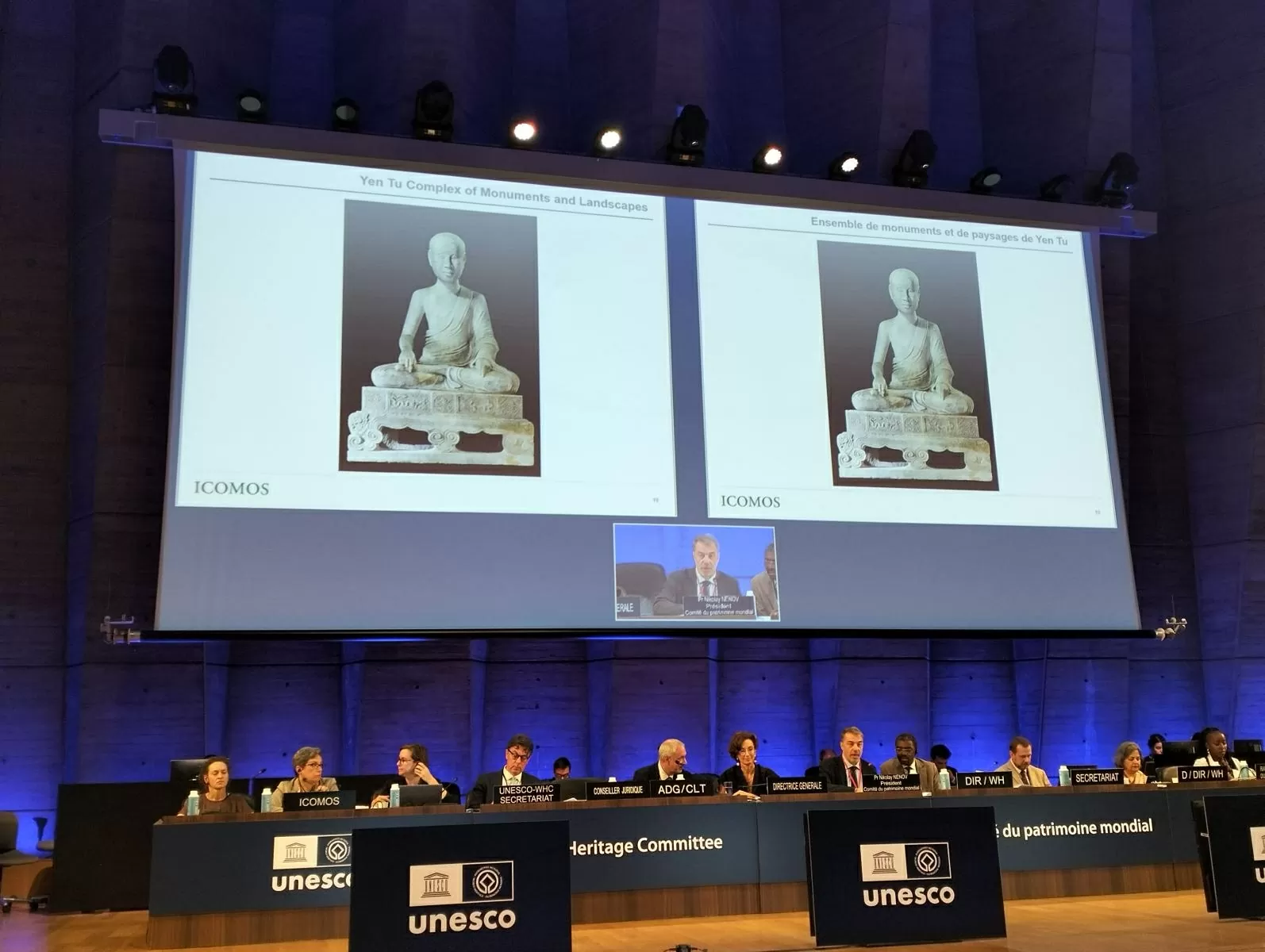 |
| The complex of relics and scenic spots Yen Tu - Vinh Nghiem - Con Son, Kiep Bac was listed as a world heritage by UNESCO. |
On July 12, at the 47th Session of the World Heritage Committee (UNESCO), the Complex of Monuments and Landscapes of Yen Tu - Vinh Nghiem, Con Son, Kiep Bac (located in the provinces of Quang Ninh, Bac Ninh and Hai Phong City) was recognized as a World Cultural Heritage.
The Complex of Monuments and Landscapes of Yen Tu - Vinh Nghiem - Con Son, Kiep Bac, with Truc Lam Buddhism as its core, was established by the Tran Dynasty kings in the 13th century, especially with the role of Buddhist King Tran Nhan Tong. Truc Lam Buddhism has created many values, making special and sustainable contributions to the cultural and spiritual heritage of humanity.
Originating from the sacred Yen Tu mountain landscape, Truc Lam Buddhism represents a philosophical system and the spirit of tolerance and altruism of Buddhism. Truc Lam Buddhism is also a testament to the harmonious combination of Mahayana Buddhism with Confucian ethics, Taoist cosmology and indigenous Vietnamese beliefs.
The ideological and cultural values of Truc Lam Buddhism are completely consistent with UNESCO's basic goals in maintaining and enriching the common values of humanity: Education, building a culture of peace ; spirit of self-reliance, harmonious combination between humans and the natural world, respecting the laws of nature.
Through temples, hermitages, pilgrimage routes, stone steles, woodblocks and other carefully preserved relics distributed over a large area from Yen Tu to Vinh Nghiem and Con Son - Kiep Bac, the heritage fully reflects the stages of development of Truc Lam Buddhism: from its establishment and institutionalization to its revival and continued spread of creative and humanistic values. These relic sites, formed many centuries ago, always demonstrate continued development, playing the role of religious and spiritual cultural centers, and pilgrimage destinations for millions of visitors each year.
The Yen Tu - Vinh Nghiem, Con Son, Kiep Bac relic and landscape complex, recognized by UNESCO as a World Cultural Heritage according to the above criteria, is evidence of the unique combination between the state, religion and people in the formation of the Vietnamese national identity; along with the sacred landscape formed through frequent and close interactions with nature; and an ethical system based on the love of peace, self-cultivation, tolerance, kindness and harmony between humans and nature.
Ms. Nguyen Thi Hanh, Vice Chairwoman of the People's Committee of Quang Ninh Province, Deputy Head of the Steering Committee - Head of the Executive Committee for the construction of the dossier of Yen Tu - Vinh Nghiem, Con Son, Kiep Bac, said that the dossier was carefully and methodically built by Quang Ninh Province with high quality. After many years of efforts, the Heritage has been officially recognized internationally.
Quang Ninh province will continue to develop and implement a project to preserve, restore and promote the value of the Heritage, in order to ensure sustainability and widely spread the noble value of the World Heritage. The moment of being listed is a great pride not only for the authorities and people of the three localities of Quang Ninh, Bac Ninh, Hai Phong, but also for the people of the whole country. The Yen Tu - Vinh Nghiem - Con Son - Kiep Bac relic and landscape complex is the first chain-type World Heritage, and the second inter-provincial Heritage among the nine World Heritages of Vietnam recognized by UNESCO.
Permanent Deputy Minister of Foreign Affairs Nguyen Minh Vu, Chairman of the Vietnam National Commission for UNESCO, said that the inscription is not only a source of pride for the authorities and people of the three localities of Quang Ninh, Hai Phong and Bac Ninh, but also a common joy for Vietnam. This recognition affirms the international appreciation for the value of the Complex of Monuments and the beautiful humanistic and peaceful thoughts of Truc Lam Buddhism founded by King Tran Nhan Tong, as well as Vietnam's efforts in protecting the heritage.
Recognition from UNESCO contributes to enhancing the country's position in the international arena, while creating favorable conditions for preserving and promoting heritage values in a sustainable manner. The inscription of the Complex of Monuments also helps strengthen regional links between Quang Ninh, Hai Phong, and Bac Ninh, building a unified heritage space, contributing to promoting the image of the country and people of Vietnam.
At the same time, this is also another contribution of Vietnam to the goal of preserving and promoting heritage values that UNESCO is promoting. Honor and pride always go hand in hand with responsibility, requiring all levels, sectors and localities to raise awareness and synchronously deploy practical and effective measures to preserve and promote heritage values in accordance with the spirit of the World Heritage Convention associated with sustainable development.
| Permanent Deputy Minister of Foreign Affairs Nguyen Minh Vu, Chairman of the Vietnam National Commission for UNESCO, said that the inscription is not only a source of pride for the authorities and people of the three localities of Quang Ninh, Hai Phong and Bac Ninh, but also a common joy for Vietnam. |
In his response speech, Deputy Minister of Culture, Sports and Tourism, Dr. Architect Hoang Dao Cuong emphasized that in order to achieve this success, for many years now, the system of relics and intangible cultural heritages of localities has received special attention from the Ministry of Culture, Sports and Tourism and the provinces through the implementation of many projects to preserve and restore relic works; research, identify values to prepare nomination and registration dossiers domestically and internationally; contribute to protecting the outstanding global value of the heritage site, improving the cultural and spiritual life of the local community and people.
The Deputy Minister was pleased to inform the Session that Vietnam will continue to implement activities to protect and promote the values of World Heritage in a sustainable manner, implementing a model of good management of World Heritage in Vietnam, a spirit that has been demonstrated by the fact that on November 23, 2024, the National Assembly of the Socialist Republic of Vietnam passed the Law on Cultural Heritage 2024, along with documents guiding its implementation (including supplementing the internalization of UNESCO's sustainable development perspectives in the spirit of the World Heritage Convention, providing regulations on heritage impact assessment in the context of World Heritage, developing a World Heritage Management and Protection Plan; linking the conservation of relics with the protection of intangible cultural heritage at World Heritage sites, with the goal of serving local communities better and better...).
According to Associate Professor, Dr. Le Thi Thu Hien, Director of the Department of Cultural Heritage, Standing Member of the National Cultural Heritage Council, Head of the Vietnamese expert group participating in the World Heritage Committee, the inclusion of the Yen Tu - Vinh Nghiem, Con Son, Kiep Bac Monuments and Landscape Complex into the World Heritage List by UNESCO is the result of closely following and implementing the direction of the Party and State leaders, General Secretary To Lam, Prime Minister Pham Minh Chinh, and Deputy Prime Ministers.
This result demonstrates the great efforts and determination of the localities of Quang Ninh, Hai Phong, Bac Ninh, especially the leading role of the People's Committee of Quang Ninh province throughout the research process starting from 2013 to register with UNESCO to include in the List of Tentative Nominations for clusters and sites of relics in Quang Ninh province and Bac Giang province (now Bac Ninh province) until 2020, assigned by the Prime Minister to add relics in Hai Duong province (now Hai Phong city) to ensure the integrity of the heritage; together with the determination to strengthen research work, complete the dossier to propose UNESCO to recognize it as a World Heritage Site; that journey has been full of difficulties and challenges, including the recommendation to "return the dossier" right before the Session. However, it is affirmed that for more than 10 years, the Vietnamese Government has paid special attention to and promoted research work at the heritage site until today's success.
“This achievement demonstrates our combined strength, the close and effective coordination between localities and the Ministry of Culture, Sports and Tourism - the focal agency to help the Government implement unified state management of cultural heritage, fulfill the responsibilities and commitments of member countries participating in UNESCO Conventions on cultural heritage; of the Ministry of Foreign Affairs, the National Cultural Heritage Council and experts participating in the World Heritage Committee of Vietnam.
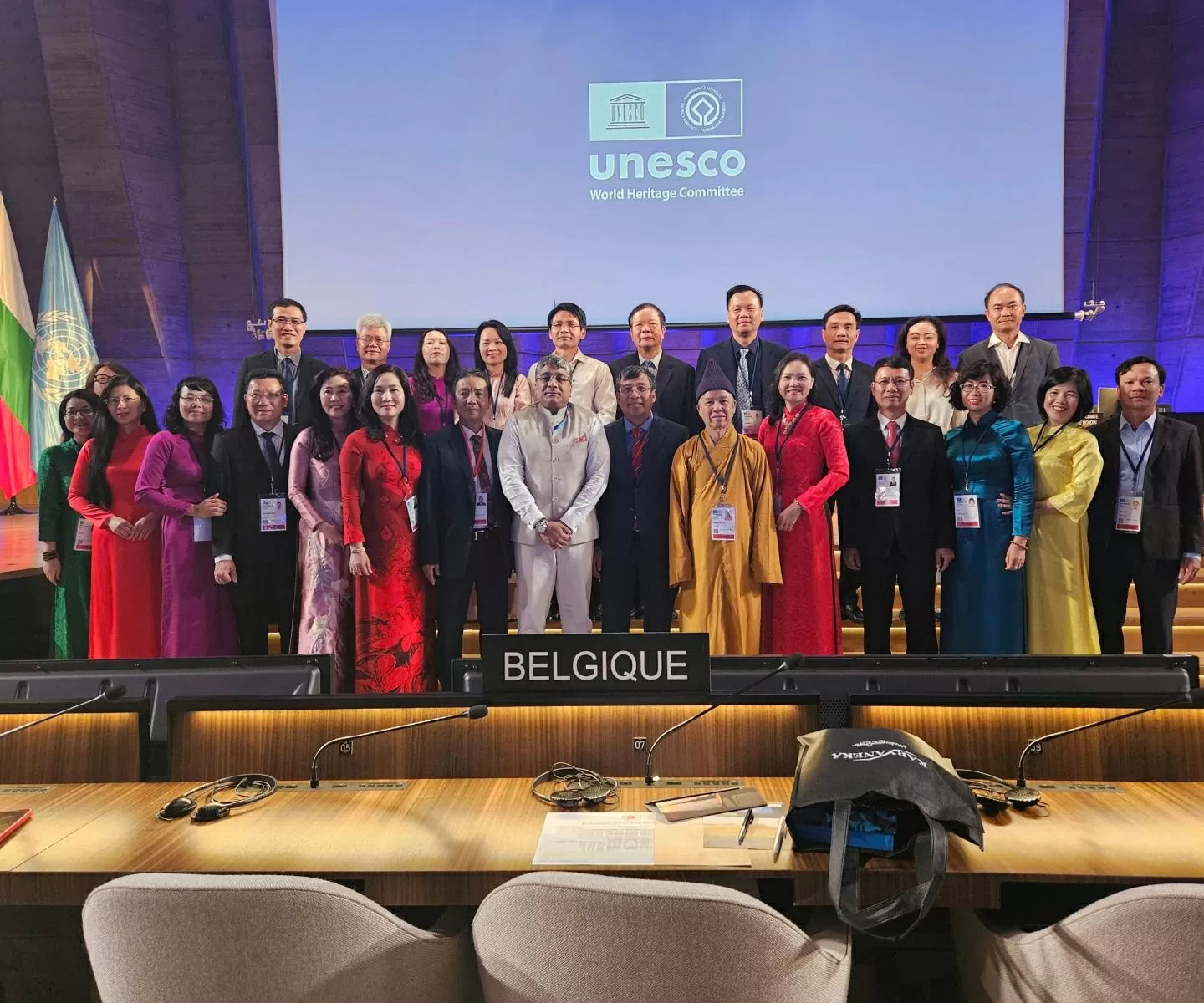 |
| Vietnamese delegation attends the 47th Session of the World Heritage Committee (UNESCO). |
The success of the heritage dossier has an important role of the Vietnam National Commission for UNESCO, the Permanent Delegation of Vietnam to UNESCO in Paris - France in coordinating information, promptly connecting, working with specialized agencies of UNESCO, ICOMOS, the World Heritage Committee, experts to conduct dozens of meetings, contacts with Heads of Delegations, Ambassadors, experts of 20 member countries of the World Heritage Committee, Directors of the World Heritage Center, ICOMOS to help us update, explain information, clarify outstanding global values, strong commitment to implementing ICOMOS recommendations on heritage conservation. This success is greatly contributed by the special assistance of the UNESCO Representative Office in Vietnam, international experts, ICOMOS has actively provided professional support in completing the dossier, explaining and implementing ICOMOS recommendations well", Assoc.Prof.Dr. Le Thi Thu Hien emphasized.
In particular, Prime Minister Pham Minh Chinh sent a letter to the Director General of UNESCO and 20 member countries of the World Heritage Committee requesting support for the nomination dossier of the Yen Tu - Vinh Nghiem - Con Son, Kiep Bac Monuments and Landscape Complex, affirming Vietnam's strong commitment to heritage management and protection, which was highly appreciated by the members. On that basis, the Session reached absolute consensus, all members supported the Yen Tu - Vinh Nghiem - Con Son, Kiep Bac Monuments and Landscape Complex as worthy of being inscribed on the World Heritage List.
The World Heritage Sites in Vietnam recognized by UNESCO have been making an important contribution to the socio-economic development of the locality, contributing to environmental protection, green and sustainable growth, while at the same time promoting Vietnamese culture, country and people to the world and enriching the world's cultural treasures. This contribution also demonstrates Vietnam's commitment and responsibility in protecting World Heritage Sites not only in Vietnam but also in the Southeast Asian region, preserving them for the present and passing them on to future generations. Vietnam, as a member of the World Heritage Committee for the 2023-2027 term, is also making a more active contribution to the implementation of the World Heritage Convention.
Source: https://baoquocte.vn/quan-the-di-tich-va-danh-lam-thang-canh-yen-tu-vinh-nghiem-con-son-kiep-bac-duoc-unesco-ghi-vao-danh-muc-di-san-the-gioi-320759.html





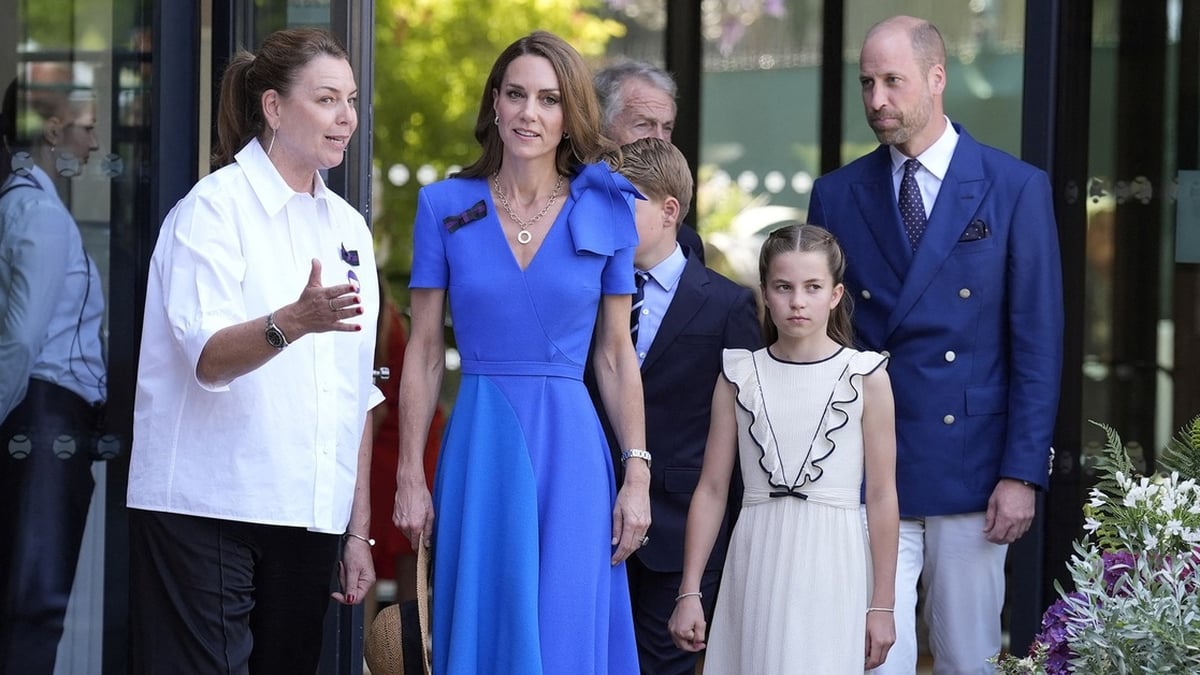

























































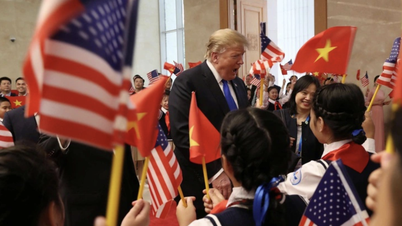

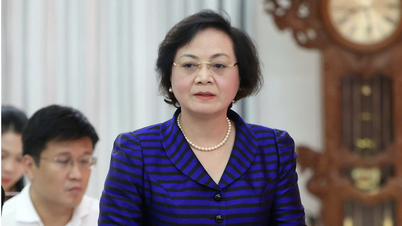

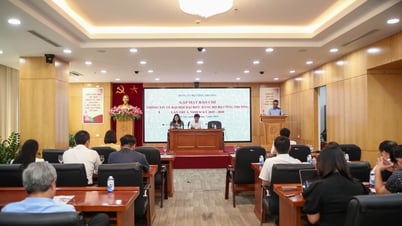

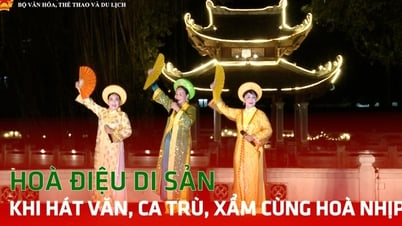




























Comment (0)